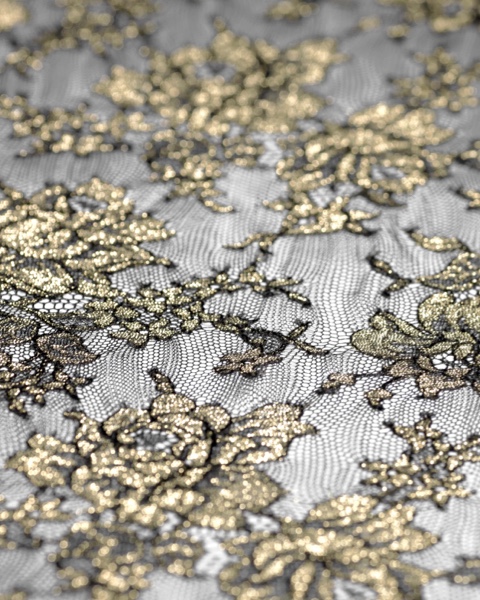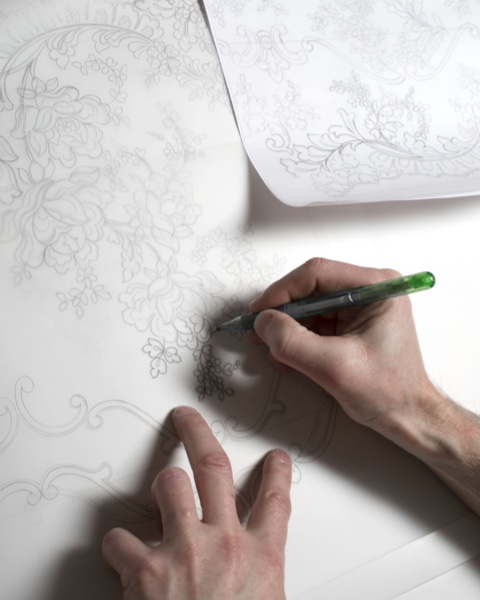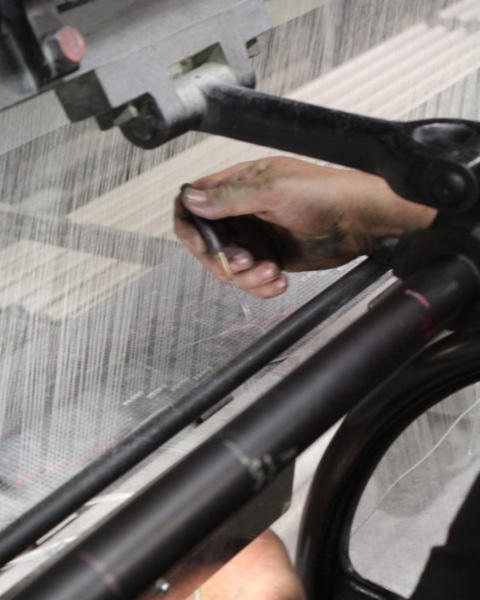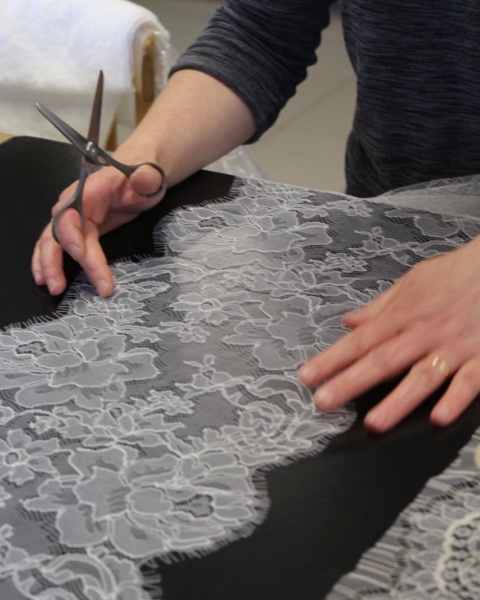WHAT IS THE DENTELLE DE CALAIS- CAUDRY®?
C’est pour partager avec vous l’amour des produits bien faits et notre passion pour la dentelle de Calais-Caudry® que nous avons créé Maison 1889.
28 février 2022

AN EXCEPTIONAL LACE
The industrial revolution as a beginning
In 1809, it was John Heathcoat, a very young American, who developed a pedal- loom prototype made up of a system of bobbins and carriages. Under the Napoleonic influence, no trade with England was permitted, that is why and so as to make it possible for the tulle to be commercialized in France, the machines were made imported in spare parts in Calais and Caudry in Northern France in an illicit manner.
It was only a few years later, in 1834, that a British, by the name of Leavers, had the idea of uniting the jacquard technique weaving to John Heathcoat’s mechanical process, thus triggering the development of the tulle looming into a veritable lace loom. These huge machines, weighing about 15 tons,made possible the achievement of a mechanical lace, with all imaginable designs, the finest and the most elaborate, modeling the hand-made lace of the most famous French cities, such as Chantilly, Valenciennes, Alençon, Cluny…. However, the machine could only carry out a part of the work: the lace weaving. The preparation and hand-finishing works required no less than seventeen various skills. So, very soon, in Caudry and Calais, red- brick workshops were built at backs of gardens where one or two looms ran. On each side of the streets, you could hear the music of the Leavers looms weaving the lace to be exported across the world.
The manufacturing process
Le métier Leavers mesure plus de 10 mètres, pour un poids avoisinant les 12 tonnes. Tout commence par la main de l’homme qui esquisse un motif qu’il faudra retranscrire en nombre de fils. Les fils de chaîne et de trame se lacent alors dans un ballet pour reproduire fidèlement la création. Par son procédé de fabrication, cette dentelle tissée est d’une extrême solidité comparée aux dentelles tricotées.
The Leavers loom is over ten-meter long with an approximate weight of 12 tons. The process starts with the man’s hand which frames a design that will have to be re-transcribed in a number of threads. The warp and weft threads lace up in a ballet to reproduce the creation with high precision. Owing to this manufacturing process, this woven lace is extremely resistant in comparison with knit lace.
The chain which allows the creation of the Leavers lace is completed by the winder who handles hundreds of nylon or cotton spools of threads then wrapped around a textile mill step by step.
By a quick and skilled hand, the winder spools on 150 meters of threads in the metallic bobbins which represent with the trolley the heart of the Leavers machine.
A soft and perfectly controlled gesture to achieve the weft of the lace.
Surrounded by cones of various materials and with the help of the power-loom, the organizer makes up the warp beams which become the gimps and the embroiderers.
The “rannoueurs” garnish the Leavers loom with lurex (a metallic fiber used in clothing for embellishment) cotton, silk or wool to design the most beautiful patterns which will come out once dyed.
The last step of the preparation is that of reassembly, when the worker inserts the bobbin into the carriage with gentleness and processing speed. At last, the whole has to be standardised so as to obtain a perfect lace all along the manufacturing process.
The tulle worker: an orchestra conductor
The tulle worker watches the Leavers loom as the guardian in charge of the knowledge transmitted by word of mouth for two centuries. He has a perfect knowledge of the machine as nobody does. Trained in the workshops by the means of an apprenticeship status, he sets up the loom according to the patterns and to the various materials in order to obtain the most beautiful lace of all, because each loom is unique and every pattern stresses the work complexity. From the noise produced by the running loom, the worker already knows the quality level to be expected.
FROM THE HAUTS DE FRANCE WORKSHOPS TO FASHION HOUSES
Since the beginning of its manufacturing, the Dentelle de Calais-Caudry® has never stopped being agreeable, timeless. Designs created during the last century remain up to date and go on inspiring the top fashion designers throughout the world. More than a mere material, the Leavers lace fills us with wonder, appeals to our senses through its infinite and delicate fineness. It almost takes us to the heavens, allows us to free our imagination, in viscose or in cotton, its softness takes us back to our most tender childhood.


